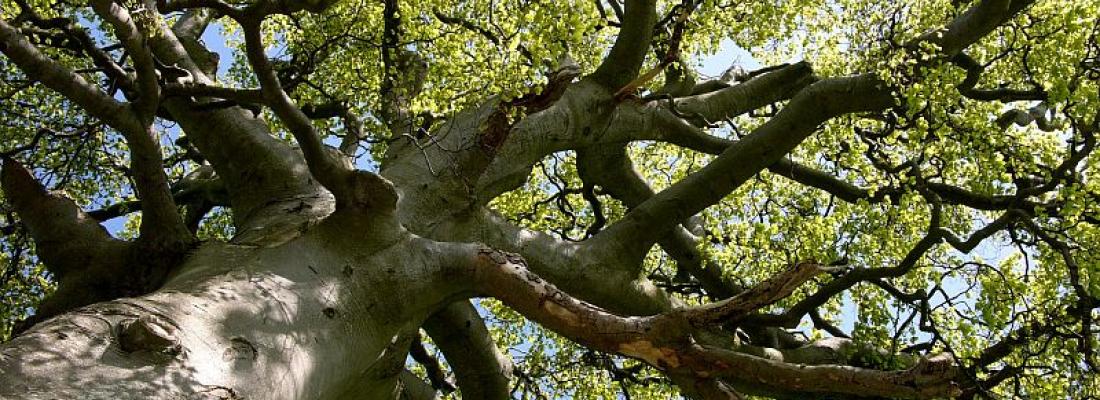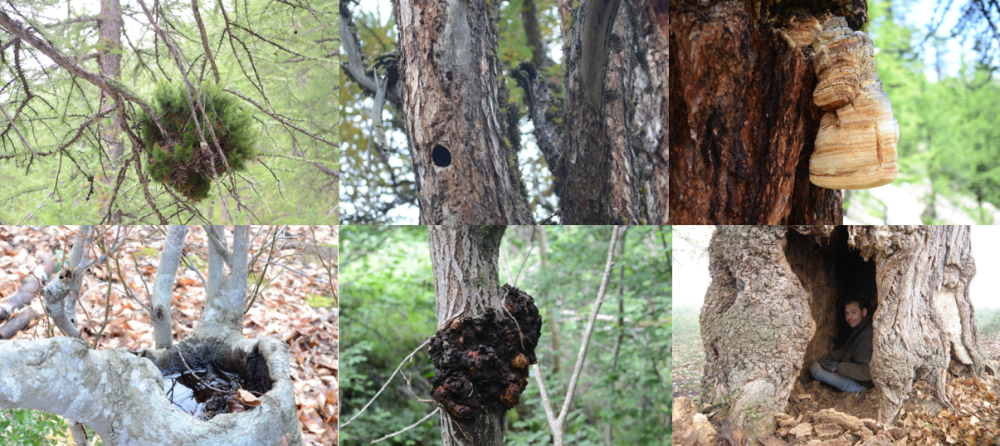Biodiversity Reading time 2 min
Toward a better understanding of tree-related microhabitats
Published on 17 April 2023

Forest management has a strong impact on the density, diversity and spatial distribution of small structures occurring on trees known as tree-related microhabitats. They serve as feeding, breeding and hibernation sites for insects, mammals, plants, fungi, worms, etc. and are vital to the survival of thousands of forest-dwelling species.
Until now, spatially-explicit data on the formation mechanisms of tree-related microhabitats in forests was scarce. To better understand these structures, a European research and development programme (European Integrate Network), involving scientists from the DYNAFOR laboratory, delimited one-hectare plots, or "marteloscopes", across a wide range of forest types. These plots are mainly intended to train managers to adopt a more sustainable silviculture* that promotes biodiversity. For each plot, the team described every single tree in detail—species, size, wood quality, etc.—and included an inventory of its tree-related microhabitats.

This data is stored in a database called I+, run by the European Forest Institute (EFI). Part of the database has been made public, via the Global Biodiversity Information Facility (GBIF). Additionally, a data paper—a scientific publication describing a dataset—has been published in an international journal with the objective of describing the dataset and informing the public of its availability in open access.
Shared science
A collection of data including the location of each tree in the plot, their species, their diameter at breast height, their total height, their status—dead or alive—and a list of the tree-related microhabitats they support is now available to all users. A visual assessment of timber quality is also carried out to provide an estimate of the economic value of each tree. The database includes observations of more than 42,000 trees from 111 marteloscopes in 17 European countries, as well as in Iran and Chile. As of 8 April 2023, the gbif.org. portal had been downloaded a total of 18,717 times.
The novelty of this dataset is that it provides the position of each tree in the stand, which allows researchers to study the spatial distribution of trees bearing tree-related microhabitats. This information could be used to refine recommendations for the conservation of tree-related microhabitats in managed forests, taking into account the species that depend on them and play a functional role in forest ecosystems. The network of marteloscopes is still expanding, and with it the database of tree-related microhabitats, which will be regularly updated.
* Science concerned with the cultivation, maintenance and rational use of forests
Reference
Zudin S, Heintz W, Kraus D, Krumm F, Larrieu L, Schuck A (2022) A spatially-explicit database of tree-related microhabitats in Europe and beyond. Biodiversity Data Journal 10; https://doi.org/10.3897/BDJ.10.e91385
The following organisations were involved in the data paper: European Forest Institute (Joensuu, Finland), Bavarian State Forest (Neureichenau, Germany), Swiss Federal Institute for Forest, Snow and Landscape Research (Birmensdorf, Switzerland), Centre national de la propriété forestière (Toulouse, France) and INRAE. It was achieved through the work of a broad consortium of organisations that participated in the establishment of the plot network and the collection of data.
Geographic coverage
The network of marteloscope plots is almost exclusively located in Europe. It is, however, open to include plots from institutions around the world recording data based on the collection protocol for tree-related microhabitats. So far, plots are included from the following European countries: Belgium, Bosnia and Herzegovina, Czech Republic, Denmark, France, Germany, Hungary, Ireland, Italy, Luxembourg, Poland, Serbia, Slovakia, Slovenia, Spain, Sweden and Switzerland. A few datasets are also from other world regions, namely Chile and Iran.
